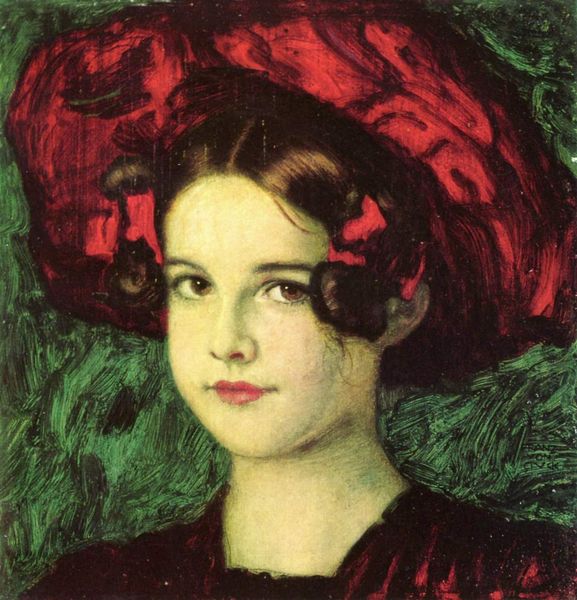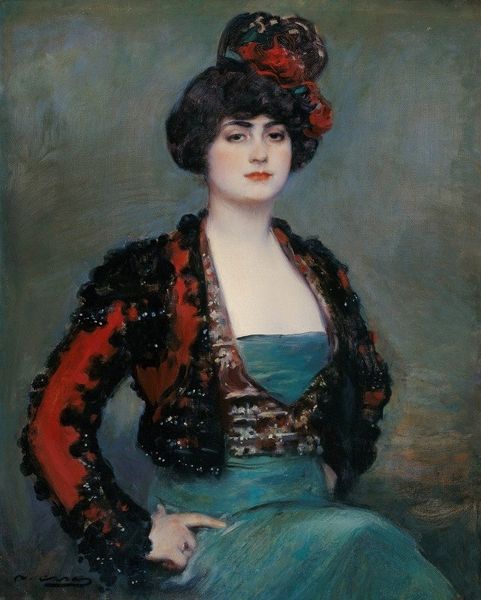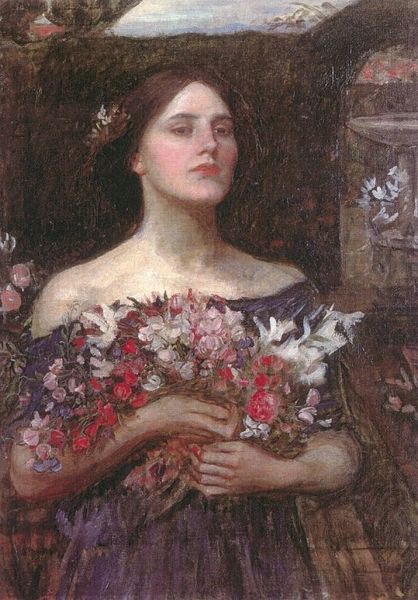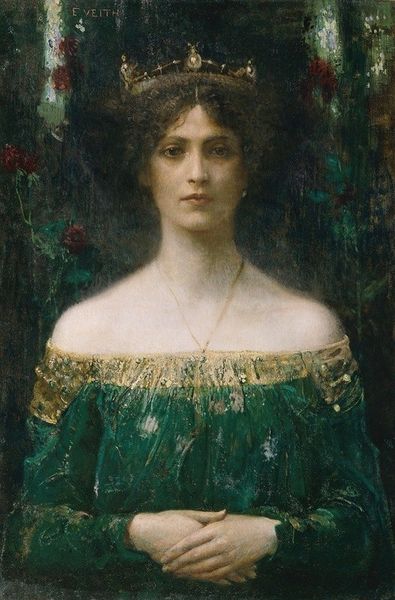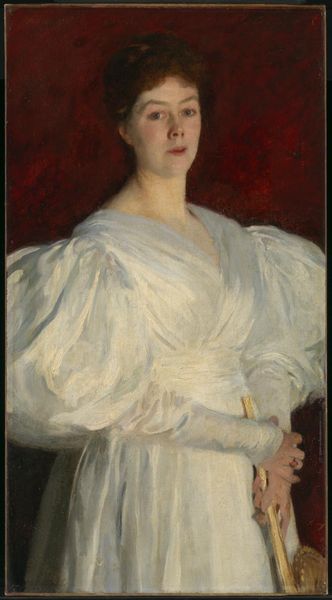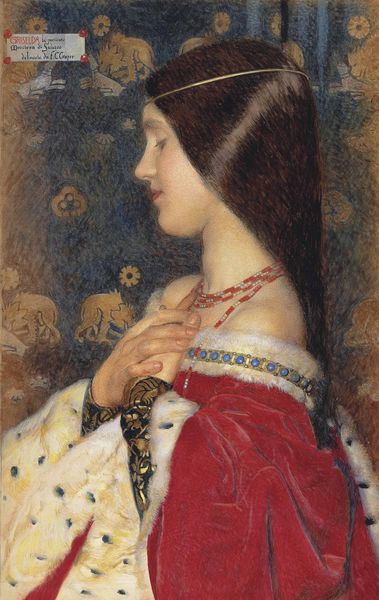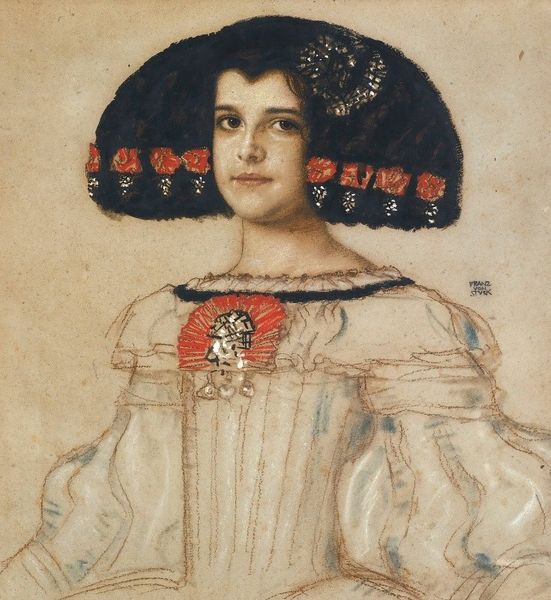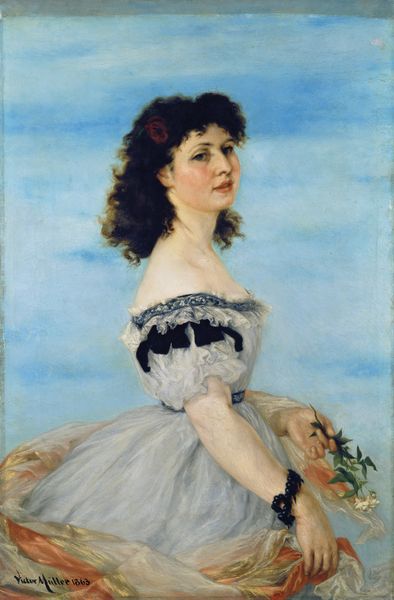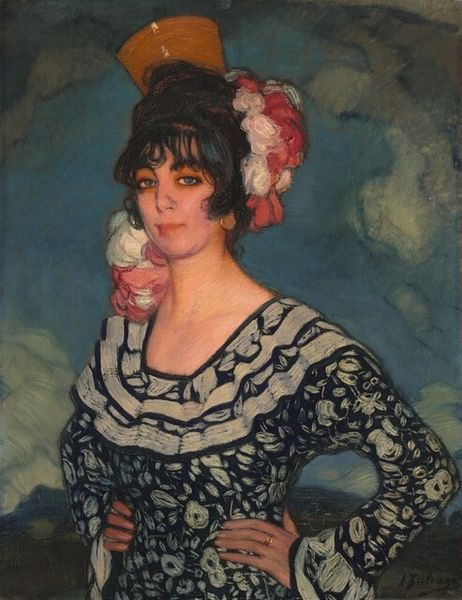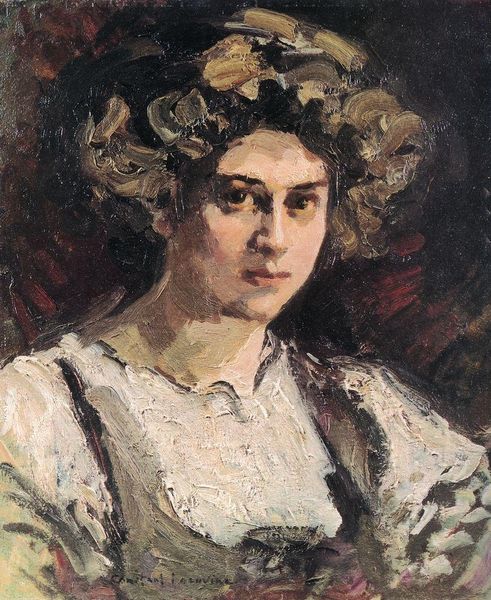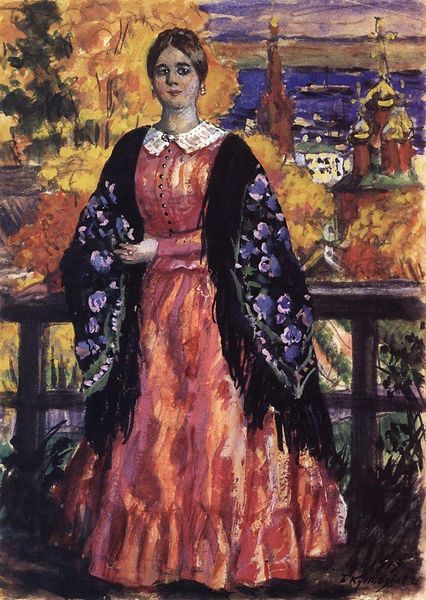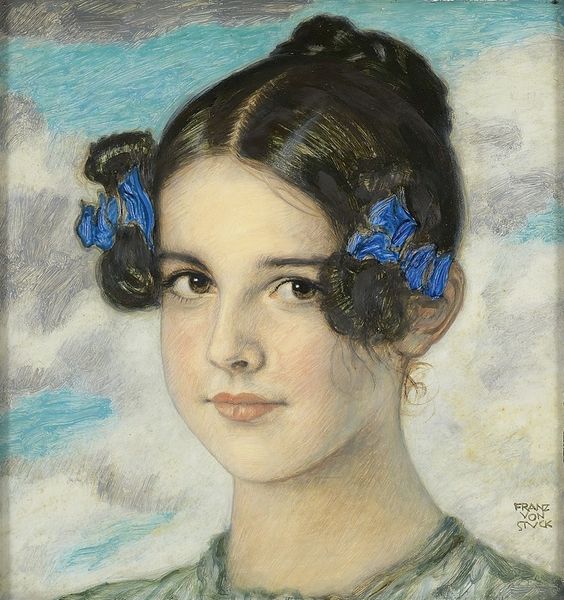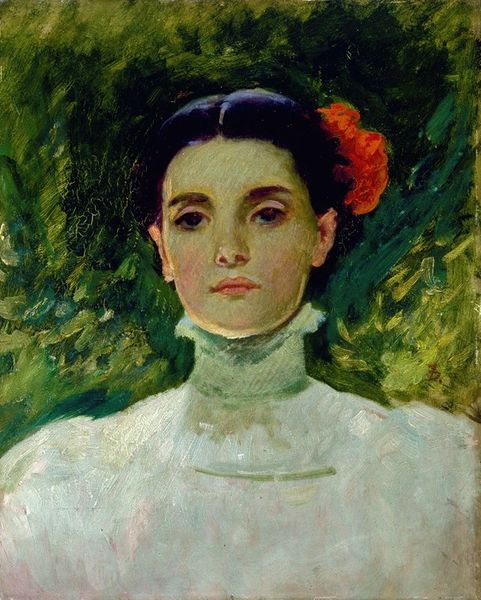
painting, oil-paint
#
portrait
#
figurative
#
art-nouveau
#
painting
#
oil-paint
#
oil painting
#
portrait reference
#
intimism
#
naive art
#
symbolism
#
portrait art
Copyright: Public Domain: Artvee
Curator: Well, my first impression is, she’s intense. And that gaze…piercing! The overall effect is of someone self-possessed, maybe even a little severe. Editor: That's fascinating! You know, we’re looking at “My Daughter Mary in a Velázquez Costume,” painted in 1912 by Franz von Stuck. It’s an oil on canvas and very much indicative of his portraiture style. What strikes me is the performative aspect; the costuming becomes this vehicle to consider class and historical representation through portraiture at the beginning of the 20th century. Curator: I definitely get that. She's embodying a role. But I’m also wondering, beyond the social context, what the personal context might have been? As his daughter, did Mary have agency in this portrayal? I can't help but see a dialogue between them, where she's not just a passive subject but an active collaborator, almost theatrical. Editor: Yes, there's an undeniable theatricality to it, heightened by the almost stage-like lighting and dramatic background. Von Stuck, of course, taught at the Munich Academy and influenced a generation of artists interested in Symbolism and Secession. I think this piece plays right into that interest, referencing historical portraiture while making something fresh. It’s a dialogue with art history, but one that seems to collapse parent-child relationships within the space of the painting. Curator: Exactly! And look at the colour choices! That deep green against the white of her dress. There is the splash of crimson—it feels both elegant and deliberately unsettling, as if she is staring us down, challenging us to define her. The rigid geometry that frames the image adds to this discomfort; it emphasizes the performance of femininity but leaves room to decode a complex interplay of vulnerability and resolve. Editor: It truly makes one wonder, doesn't it, about the dynamics within artistic families and the various roles that they fulfill publicly versus what their true domestic experiences looked like? It challenges us to question what gets preserved—and who benefits most—from certain performances within a lineage. Curator: Right, it leaves us wrestling with her story, even knowing so little, doesn't it? Editor: Indeed! Another intriguing painting to contemplate as we make our way through art history.
Comments
No comments
Be the first to comment and join the conversation on the ultimate creative platform.
